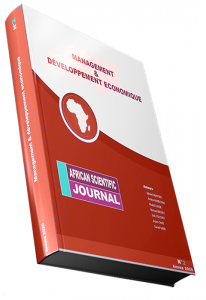Manifestations of climate variability and change perceived by lowland producers in the rural commune of Doumanaba in Mali
DOI:
https://doi.org/10.5281/zenodo.6794328Keywords:
Lowlands, variability, climate change, perception, adaptation strategyAbstract
In Mali, climate variability and change are a major threat. The agricultural sector is highly exposed to climatic hazards. This study aims to analyze farmer perception of climate change, in the municipality of Doumanaba, in order to contribute to a sustainable use of lowlands. A survey of one hundred and eighty (180) farmer was conducted in the four villages. Cumulatively one “focus group discussion” (FGD) session was held in each the four villages that exploit the lowland. To complete this study, climatic analyzes were carried out with precipitation and temperatures data from 1960 to 2020 from Sikasso meteorological station in order to compare the climate trend with the farmer perception. The climatic phenomena perceived by the respondents are the spatio-temporal variability of rainfall, drought spell at the beginning of the rainy season, rising temperatures and more frequent floods. The analysis of the precipitation time series revealed a return of wet conditions from the years 2002 to 2020. The maximum temperature, although stable over the period 1960-2020, showed an upward trend over the period 2000-2020 while the minimum temperature increased by 1.69°C over the period 1987 to 2020. The resulting impacts was a decrease of crop yield and farmer income. In line with this situation, the adaptation strategies adopted by the farmers are hydro-agricultural developments, market gardening, the use of tolerant varieties and rural migration.
Downloads
Published
How to Cite
Issue
Section
License
Copyright (c) 2022 African Scientific Journal

This work is licensed under a Creative Commons Attribution-NonCommercial-NoDerivatives 4.0 International License.





















